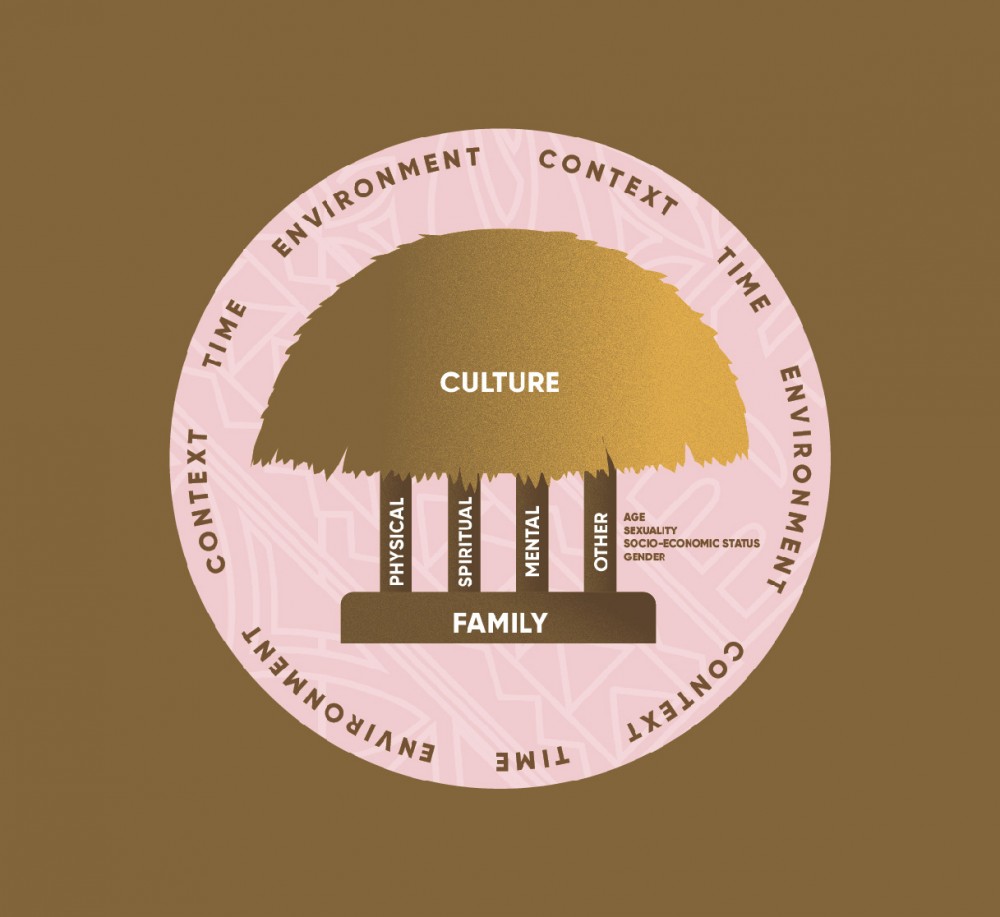Pacific Frameworks
The Nōku te Ao strategy is grounded in Kaupapa Māori - so the work we do speaks to kaupapa Māori principles in some way. We do this to ensure that our work to end mental distress discrimination is equitable and benefits everyone in Aotearoa, and to be the best Te Tiriti o Waitangi partners that we can be.
Using an equity approach, Nōku te Ao also aims to create better outcomes for our Pasifika communities. Understanding that Pacific communities may experience discrimination differently to Māori, we are open to the use of Pacific frameworks and approaches. If this applies to your project, in your application, we ask that you speak to the use of the Fono fale model.
Fono Fale
The Foundation or the Floor of the Fale: (Aiga (Samoan), Kopu Tangata (Cook Islands), Kainga (Tonga), Magafaoa (Niue), Family)
Represents the family which is the foundation for all Pacific Island cultures. The family can be a nuclear family as well as an extended family. It can also be constituted family that is bound by kinship, titles, marriage, partnership or covenant agreement, which forms the fundamental basis of Pacific Island social organisations. The history and genealogy are in the foundation/floor/family which ties them to titles, lands, motu/islands, sea and to the Gods of the Pacific as well as to other cultures.
How this framework can be used in your project:
Your project could look at how to advocate or support a family member who has lived experience going through certain social services.
The Roof (Culture)
Represents cultural values and beliefs which shelter the family for life. Culture is dynamic and is constantly evolving and adapting. In New Zealand, culture includes the culture of New Zealand-raised Pacific people as well as those Pacific people born and raised in the islands.
How this framework can be used in your project:
Use of languages, cultural processes and traditional practices to change the behaviour of those with prejudiced views of mental distress. What are some cultural ways which can be used positively to change the behaviours of discriminators?
Four Pou
Spiritual
The first pou relates to the sense of well-being which stems from a belief system that includes either Christianity or traditional spirituality relating to nature, spirits, language, beliefs, ancestors and history, or a combination of both.
How this can be used in your project:
Your workshop/talanoa/project could open and close with karakia/lotū.
Physical
The second pou relates to biological or physical well-being. It is the relationship of the body which consists of anatomy and physiology as well as physical or organic and inorganic substances such as food, water, air and medications that can have either positive or negative impacts on physical wellbeing.
How this can be used in your project:
Your project could intersect with those with a mental health diagnosis and are disabled. It can look at platforming the stories of those who have intersecting discriminatory experiences.
Mental
This pou relates to the wellbeing or the health of the mind which involves thinking and emotions as well as the behaviours expressed.
How this can be used in your project:
Raising awareness around sever mental health diagnoses and translating them into Pacific Languages
Other
The last pou relates to variables that can directly or indirectly affect health such as, but not limited to, gender, sexuality/sexual orientation, age, and socio-economic status.
How this can be used in your project:
How accessible is your project? Intersectionality for those who are Pacific as well as rainbow or disabled. Your project could be accessible for youth who identify as rainbow and are physically disabled.

The Fale is encapsulated in a cocoon or circle that contains dimensions that have direct or indirect influence on one another
Environment
This dimension addresses the relationships and uniqueness of Pacific people to their physical environment. The environment may be a rural or an urban setting.
How can be used in your project:
Creating a safe space for those with lived experience of mental distress can feel safe to share their story or won’t be triggering. Having mental health aiders for extra support
Time
This dimension relates to the actual or specific time in history that impacts Pacific people.
How can be used in your project:
For diasporas from the Pacific living here in New Zealand will have a different understanding of mental distress. Thinking about the knowledge of mental health being passed down, your project could look at combatting negative stereotypes around living with mental distress.
Context
This dimension relates to the where/how/what and the meaning it has for that person or people. The context can be concerning Pacific Island-reared people or New Zealand-reared people. Other contexts include country of residence, legal, politics and socioeconomics.
How can be used in your project:
Your project looks to redefine what mental distress looks like for Pacific populations here in New Zealand. Using non-traditional ways to change the behaviours of elders who have a more traditional mindset when it comes to mental health.
